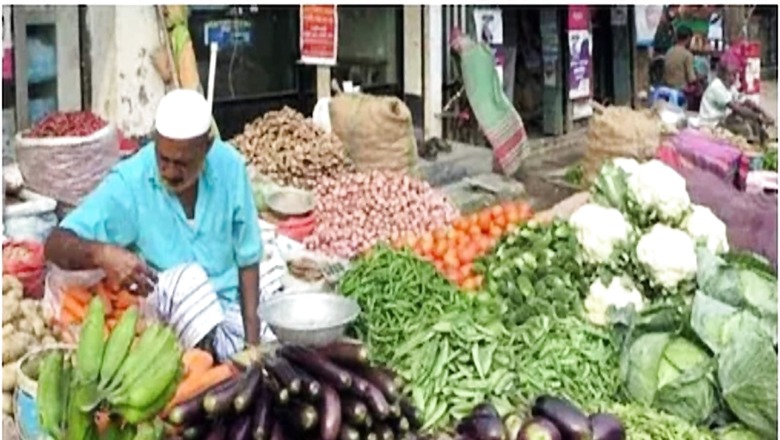
views
Subdued prices of food items like vegetables pulled down retail inflation for the third month in a row to 5.3 per cent in August, within the RBI’s comfort zone. While the Consumer Price Index (CPI)-based retail inflation declined to 5.3 per cent in August from 6.69 per cent in the same month a year ago, food inflation dipped at a much faster pace to 3.11 per cent from 9.05 per cent in August 2020.
The food inflation was also lower than 3.96 per cent in preceding month of July. Retail inflation, which rose sharply to 6.3 per cent in May from 4.23 per cent in April, has been on a downward trajectory since then. It was 6.26 per cent in June and 5.59 per cent in July this year.
The Reserve Bank, which mainly takes into account retail inflation to decide the monetary policy every two months, has been tasked by the government to keep it at 4 per cent, with a tolerance band of 2 per cent on either side.
As per the data released by the National Statistical Office (NSO) on Monday, inflation in ‘vegetables’ and ‘cereals and products’ contracted by 11.68 per cent and 1.42 per cent, respectively. However, the rate of price rise was 33 per cent in the ‘oils and fats’ segment in August 2021 over the year-ago month. In order to control rising edible oil prices during the festival season, the government recently slashed the base custom duties on palm, soyabean and sunflower oils.
The move, industry said, could bring down retail prices by Rs 4-5 per litre. ‘Fuel and light’ continued to be pocket heavy for consumers with an inflation print of 12.95 per cent last month.
Radhika Rao, Economist and Senior Vice President, DBS Singapore, said inflation decelerated on the back of favourable base effects and moderate food price pressures, as most sub-segments trended down, barring oil and fats.
“The inflation tailwind will allow the central bank to remain accommodative at the October policy review, with a bigger focus on liquidity management via absorption measures. “On sequential basis, pipeline forces remain under watch, particularly due to the domestic fuel tax rigidity, service reopening gains and passthrough of higher costs on account of supply bottlenecks alongside firm input prices,” Rao said.
The Reserve Bank had kept the key interest rate unchanged in its monetary policy review in August. Upasna Bhardwaj, Senior Economist at Kotak Mahindra Bank, expects the subsequent readings to remain fairly benign and much lower than RBI estimates. “The softer inflation would provide relief to the policymakers and more room to move much slower in terms of policy normalization,” she added.
The RBI has projected the CPI inflation at 5.7 per cent during 2021-22 — 5.9 per cent in the second quarter, 5.3 per cent in third, and 5.8 per cent in the fourth quarter of the fiscal, with risks broadly balanced. CPI inflation for Q1 2022-23 is projected at 5.1 per cent.
ICRA expects policy normalisation to commence from February next year, with a change in the stance of monetary policy to neutral from accommodative. It can be followed by a hike in the repo rate of 25 bps each in the April 2022 and June 2022 meetings. “Once the lift-off starts, we believe that the MPC will stagger rate increases over a period of time,” said Aditi Nayar, Chief Economist, ICRA.
Read all minute-by-minute news updates for Uttar Pradesh election results 2022, Punjab election results 2022, Uttarakhand election results 2022, Manipur election results 2022, and Goa election results 2022.
Click here for seat-wise LIVE result updates.




















Comments
0 comment